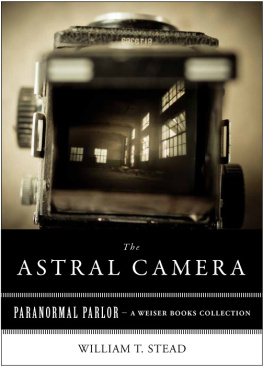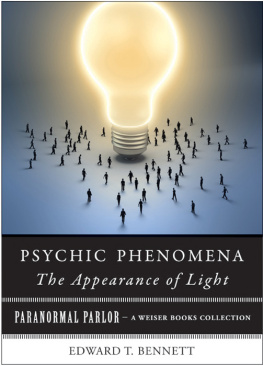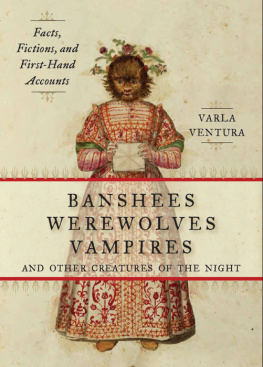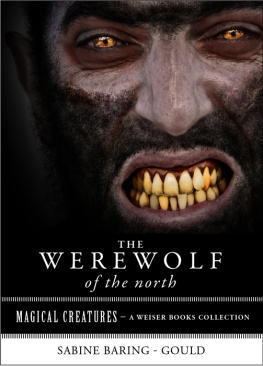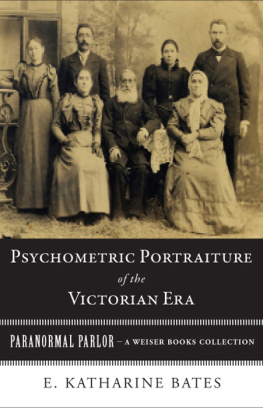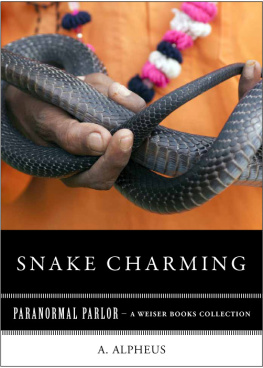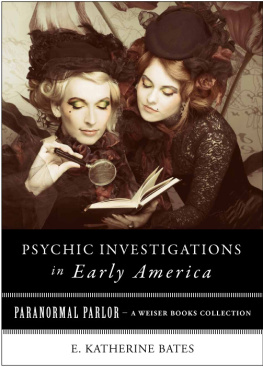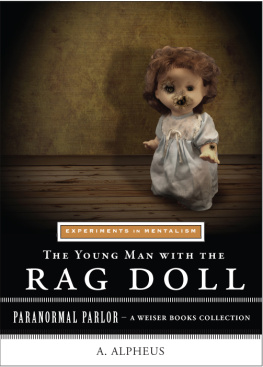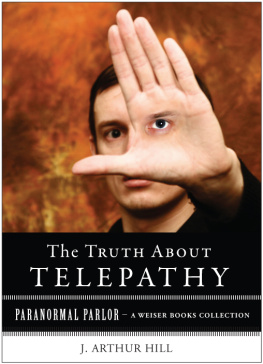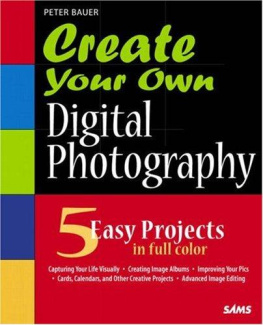This ebook edition first published in 2012 by Red Wheel/Weiser, LLC.
With offices at:
665 Third Street, Suite 400
San Francisco, CA 94107
www.redwheelweiser.com
Copyright 2012 by Red Wheel/Weiser LLC. All rights reserved.
Excerpted from Stead, W. T., and Estelle W. Stead. Real Ghost Stories. New York: George H. Doran, 1921.
eISBN: 978-1-61940-043-6
Cover design by Jim Warner
Contents
Through a Glass, Brighter
When I was a teenager, I had a prescient vision, one which showed me where my life would one day take me. Even though I lived in the countryside outside of a small Midwestern town, I knew that I would reside in a city, one on the edge of America. In my vision I saw winding, narrow streets lined with town houses, the dark waves of the ocean overhung by a bright full moon, and perched on a cliff-side, a rambling Victorian masterpiece seven stories tall. A boisterous dinner party bustled inside, champagne glasses clinking as the stylish gathering of people rang in a new year, a new start there on the edge of the Western world.
Back in Iowa, I pushed the vision from my teenage mind, stood up from where I'd fallen asleep on the floor, and turning off the glowing television set (which, incidentally, had been showing a rerun of Armistead Maupin's Tales of the City), retired to my Midwestern bed in the Midwestern house of my Midwestern boyhood.
It was easy to dismiss and forget the visionit was a mere dream, the effects of the TV show creeping into the crevices of my consciousness. But when I found myself San Francisco's newest resident several years later, driving my car along Geary Street toward the Pacific Ocean just to see what I could see, the dream came roaring back into my mind's eye. I parked the car just above the rocks and looked out over the dark afternoon waves of the Pacific, much more solid in appearanceand in realitythan they had been in my mind. There was a boxy white restaurantthe Cliff Housejust north of where I'd parked the car, and a plaque offered some history about the site where I now stood. As I read it, I discovered that on this very spot once stood the Victorian hotel I had dreamed of, but that it had been destroyed by fire nearly ninety years earlier. I put my fingers to the glass covering the plaque, as if by doing so I could travel back in time to witness the Cliff House in all its decadent splendor. But of course, the plaque yielded no more actual transport than the television screen so many years ago.
I left the restaurant and looked at the sea, and at that moment fate offered up a chance for the very time travel I sought. This opportunity came wrapped not in an overblown Victorian hotel but in what seemed to be its oppositea small wooden hut built in the shape of a 1950s camera. A pyramid turned slowly atop its roof, and next to the doorway in was a tiny ticket window inhabited by a grinning man. This was the camera obscura, my consolation prize for all the missed opportunities of being born a century too late.
I bought a ticket and hurried through the door. What was revealed to me within the camera obscura will remain vouchsafed to my eyes alone, but rest assured that you can experience the same effects of this marvel of optics and imagination. You don't even have to travel to San Francisco to try it, as there are currently other such booths in operation in Edinburgh, Long Island, Los Angeles, Havana, and the Isle of Man, to name a few locations. It makes no difference when you were born, or wherethe camera obscura evokes wonder in all.
Its magic certainly enchanted the mind of William T. Stead, who was moved to use the camera obscura as an analogy for that most difficult-to-define sensation of clairvoyance. By fiddling with the controls of the glassy screen now before you, you may step inside Stead's world and learn of all the uncanny similarities between second-sight visions and the camera obscura, two marvels admired in equal measure by mystics and seekers for centuries. Keep your eyes openthe most miraculous of visions come when you least expect them.
CLINT MARSH
BERKELEY, CA, 2012
Note: Clint Marsh is a dear friend and fellow lover of magical creatures. He is also an avid collector of ephemera, lost literature, and devilish delights. You can find him at www.wonderella.org.
VARLA VENTURA
SAN FRANCISCO, 2012
The Astral Camera
When I was staying at Orchard Lea, in Windsor Forest, I did most of my writing in a spacious window on the first floor looking out over the garden. It opened French fashion, and thereby occasioned a curious optical illusion, which may perhaps help to shed some light upon the phenomena now under consideration. For when the sun was high in the sky and the French window was set at a certain angle, the whole of the flowers, figures, etc., on my right hand appeared reflected upon the lawn on the left hand as vividly as if they actually existed in duplicate. So real was the illusion that for some hours I was under the impression that a broad yellow gravel path actually stretched across the lawn on my left. It was only when a little dog ran along the spectral path and suddenly vanished into thin air that I discovered the illusion. Nothing could be more complete, more life-like. The real persons who walked up the gravel to the house walked across the spectral gravel, apparently in duplicate. Both could be seen at one and the same time. I instantly thought that they could be photographed, so as to show the duplication produced by the illusion. Unfortunately, although the spectral path was distinctly visible through the glass to the eye, no impression whatever was left on the sensitive plate. My friend writes:
I have tried the phantom path, and I am sorry to say it is too phantom to make any impression on the plate. All that you get is the blaze of light from the glass window, some very faint trees, and no path at all. Possibly, with a June sun, it might have been different; but I doubt it, as one is told never to put the camera facing a window. It is having to take through the glass window which is fatal.
This set me thinking. It was a simple optical illusion, no doubt, similar to that which enabled Pepper to produce his ghosts at the Polytechnic. But what was the agency which enabled me to see the figures and flowers, and trees and gravel, all transferred, as by the cunning act of some magician, from the right to the left? Simply a swinging pane of perfectly transparent glass. To those who have neither studied the laws of optics nor seen the phenomenon in question, it must seem impossible that a pellucid window-pane could transfer so faithfully that which happened at one end of the garden to the other as to cause it to be mistaken for reality. Yet there was the phenomenon before my eyes. The dog ran doublethe real dog to the right, the spectral dog to the leftand no one could tell at first sight t'other from which. Now, may it not be that this supplies a suggestion as to the cause of the phenomenon of clairvoyance? Is it not possible that there may exist in Nature some as yet undiscovered analogue to the swinging windowpane which may enable us to see before our eyes here and now events which are transpiring at the other end of the world? In the mysterious, subconscious world in which the clairvoyant lives, may there not be some subtle, sympathetic lens, fashioned out of strong affection or some other relation, which may enable some of us to see that which is quite invisible to the ordinary eye?
A Surrey Laundry Seen in Cornwall
Such thoughts came to my mind when I asked the Housekeeper whether she had ever seen any of the phantasmal apparitions of her mistress, my hostess, Mrs. M. The housekeeper, a comfortable, buxom Cornish woman, smiled incredulously. No, she had seen nothing, heard nothing, believed nothing. As to phantasmal bodies, she would prefer to see them first. Had she ever seen a ghost? No, never. Had ever had any hallucinations? No. But one thing had happened, rather curious now that she came to think of it. Last year, when living on the coast far down in the west country, she had suddenly seen as in a dream the house in Hindhead where we were now standing. She had never been in Surrey in her life. She had no idea that she would ever go there, nor did she know that it was in Surrey. What she saw was the laundry. She was standing inside it, and remarked to her husband how strange and large it looked. She looked out at the windows and saw the house and the surroundings with strange distinctness. Then the vision faded away, leaving no other impress on the mind than that she had seen an exceptionally large laundry close to a small country-house in a place where she had never been in before.
Next page
